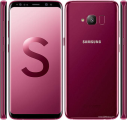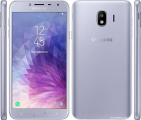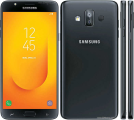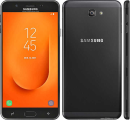Samsung Galaxy S6 Prices
Important Note.
- All prices are in Pakistani Rupee (PKR)
- Prices may vary at stores and our effort will be to provide you with the updated prices.
- The latest price of Samsung Galaxy S6 was obtained on 17 مئی, 2019. The prices at the original stores had been updated on the respective mentioned dates.
- Find out WhatMobile price has dropped in Pakistan by selecting Notify Price Drop button
- Find out WhatMobile has better specifications by clicking Add To Compare Button find out what Mobile has better reviews by visiting our reviews section
- Find out WhatMobile is cheaper on which retailer by clicking Compare prices from retailers button
Search Terms
- Samsung Galaxy S6
Specifications
| GENERAL | |
| 2G Network | GSM 850 / 900 / 1800 / 1900 |
|---|---|
| 3G Network | HSDPA 850 / 900 / 1900 / 2100 - SM-G925F |
| 4G Network | LTE 800 / 850 / 900 / 1800 / 1900 / 2100 / 2600 - SM-G925F |
| Sim | Nano-SIM |
| Announced | 01/01/2015 |
| Status | Exp. release 2015, Q1 |
| BODY | |
| Weight | - Fingerprint sensor (PayPal certified) - IP67 certified - dust and water resistant - Water resistant up to 1 meter and 30 minutes |
| DISPLAY | |
| Display Size | 1440 x 2560 pixels, 5.5 inches (~534 ppi pixel density) |
| MultiTouch | Yes |
| Protection | Corning Gorilla Glass 4 - TouchWiz UI |
| SOUND | |
| AlertTypes | Vibration; MP3, WAV ringtones |
| LoudSpeaker | Yes |
| 3.5mm jack | Yes |
| MEMORY | |
| CardSlot | microSD, up to 128 GB |
| Internal | 32 GB, 3 GB RAM |
| DATA | |
| GPRS | Yes |
| EDGE | Yes |
| Speed | HSPA 42.2/5.76 Mbps, LTE Cat6 300/50 Mbps |
| WLAN | Wi-Fi 802.11 a/b/g/n/ac, dual-band, Wi-Fi Direct, hotspot |
| Blue Tooth | v4.0, A2DP, EDR, LE, apt-X |
| InfraredPort | Yes |
| NFC | Yes |
| USB | microUSB v3.0 (MHL 3 TV-out), USB Host |
| CAMERA | |
| Camera Primary | 20 MP, 4992 ? 3744 pixels, phase detection autofocus, LED flash |
| Camera Features | Dual Shot, Simultaneous HD video and image recording, geo-tagging, touch focus, face/smile detection, HDR |
| CameraVideo | 2160p@30fps, 1080p@60fps, 720p@120fps, HDR, dual-video rec. |
| CameraSecondary | 5 MP, 1080p@30fps, dual video call |
| FEATURES | |
| Processor Cores | Quad-Core |
| OS | Android OS, v5.0 (Lollipop) |
| CPU | Quad-core 1.3 GHz Cortex-A53 & Quad-core 1.9 GHz Cortex-A57 |
| Sensors | Accelerometer, gyro, proximity, compass, barometer, gesture, heart rate |
| Messaging | SMS(threaded view), MMS, Email, Push Mail, IM |
| Browser | HTML5 |
| Radio | No |
| GPS | Yes, with A-GPS, GLONASS, Beidou |
| Java | Yes, via Java MIDP emulator |
| Colors | Charcoal Black, Copper Gold, Electric Blue, Shimmery White |
| Others | - Wireless charging (Qi-enabled) - market dependent - ANT+ support - S-Voice natural language commands and dictation - Smart stay, Smart pause, Smart scroll - Air gestures - Dropbox (50 GB cloud storage) - Active noise cancellation with dedicated mic - MP4/DivX/XviD/WMV/H.264 player - MP3/WAV/WMA/eAAC+/FLAC player - Photo/video editor - Document viewer |
| BATTERY | |
| MISC | |
Reviews
Samsung has unveiled its iPhone killer for 2015, but how does the new Galaxy flagship stack up against Apple's might iPhone 6?
Price: £599 inc VAT (32GB), £660 inc VAT (64GB)
Rating: 0
The best of Android vs the best of Apple: we compare the specs to see how the Samsung Galaxy S6compares against the iPhone 6. Updated on 26/5/15. Also see:best smartphones 2015andbest new phones coming in 2015.
Also see: Samung Galaxy S6 UK release date, price and specs and Where to buy the Galaxy S6 and the best deals.
iPhone 6 vs Samsung Galaxy S6: Price & availability
Let's start by taking a look at where you can buy these smartphones and how much they're going to cost you. For the Samsung Galaxy S6, you're looking at a price of £599 SIM-free with 32GB storage, or £660 with 64GB. Pricing for the 128GB model is £720.
Meanwhile, the iPhone 6 comes in with similar prices tags. The 16GB model (which Samsung doesn't offer), is £539. There's no 32GB model – Apple instead skips straight to the 64GB model, which costs £619 so £60 less than the Samsung equivalent. The 128GB model is also slightly cheaper at £699, a £20 saving. Of course, Samsung's smartphone has a larger screen at 5.1in so the additional cost is not surprising. If you opt for Apple's larger 5.5in iPhone 6 Plus, you're looking at a starting price of £619 for the 16GB model right up to £789 for the 128GB model.
Availability for both of these smartphones in the UK is pretty straightforward: both are out now and both are available from most phone shops and carriers. The iPhone 6 is a bit older, first launched in September 2014, while the Samsung Galaxy S6 was unveiled at MWC in March of this year. This does mean that the iPhone 6 will be replaced by a newer smartphone sooner than the S6 – the next iPhone (iPhone 6S, iPhone 7?) is expected in September.
iPhone 6 vs Samsung Galaxy S6: Design
The S6 retains the style of a Galaxy S flagship, but Samsung has tackled plastic build quality complaints head on with a new metal chassis and Gorilla Glass 4 front and back. You could even argue that this Samsung smartphonelooks a teeny weeny bit like an iPhone 6.
Indeed, the bottom of the Galaxy S6 is very similar to the iPhone 6 with drilled holes for the speaker, a central USB port and the headphone jack. Samsung claims that its flagship is ever so slightly thinner, though - just 6.8mm against the iPhone's 6.9mm. However, when we measured it we found that it was 7.1mm. Funnily enough, Samsung made a few jibes at Apple at its launch event, pointing out that this super-thin phone won't bend (see our sister title Macworld's article on the iPhone 6 Plus Bendgate if you're not sure what Samsung was referring to there). The S6 is also 9g heavier than the iPhone 6, but you're unlikely to notice that.
The iPhone 6 is available in three colours: Silver, Gold or Space Grey, all of which are anodised aluminium and super-stylish. The S6, on the other hand, comes in Blue Topaz, White Pearl, Gold Platinum and Black Sapphire. The Blue Topaz and Gold Platinum are an acquired taste with a garish shiny mirror finish but we love the white and black options.

The Samsung Galaxy S6 also uses a new Apple-style touch- rather than swipe style fingerprint scanner, also built into the home button, and loses its waterproofing credentials. As before you'll find a heart-rate scanner on the rear.
In terms of dimensions, there's little difference.The Galaxy S6 is a little bigger becuase of the larger screen but both are just under 7mm thick. The iPhone 6 is marginally lighter at 129g compared to 138g.
One more design element that carries across both the iPhone 6 and Galaxy S6 is the protruding camera. We'll talk more about the camera's specs below, but both of these smartphones have cameras that stick out on the rear, meaning that they'll rock when placed on a desk.
iPhone 6 vs Samsung Galaxy S6: Hardware
Screen
This is where the major differences between the iPhone 6 and Samsung Galaxy S6 start to become clear. The Samsung Galaxy S6 has an amazing screen, and while the iPhone 6's Retina display is no dud, it's completely blown out of the water by Samsung's flagship.
First let's take a look at the screen sizes: The iPhone 6 has a 4.7in display, while the Samsung Galaxy S6's display is slightly bigger at 5.1in. We think both of these phones are manageable in size, any bigger or smaller and we start to complain about the lack of screen estate or the inability to squeeze into a pocket.
When it comes to the resolution, the iPhone 6 offers a Full HD display at 750x1334 pixels, equating to 326ppi. The Samsung Galaxy S6, however, has an incredible Quad HD (1440x2560) Super AMOLED panel with a staggering 577ppi pixel density.
Although AMOLED isn't for everyone, we certainly prefer the Galaxy S6 to the iPhone 6 in this area with that extra space and unbelievable crispness.
Whereas Apple also offers a larger version (the iPhone 6 Plus), Samsung's variant is a dual-curved-edge smartphone known as theGalaxy S6 Edge. We're awaiting more details on the possibility of a forthcoming GalaxyS6 mini and Galaxy S6 Active.

Processor and memory
As we suspected, Samsung ditched the Qualcomm Snapdragon 810 in favour of its own Exynos 64-bit octa-core chip, which has four cores running at 2.5GHz and four at 2.1GHz, with one geared toward efficiency and the other performance.
Meanwhile, the iPhone 6 uses Apple's own A8 processor, a 1.4GHz 64-bit dual-core chip. This it pairs with 1GB of RAM, whereas Samsung specifies a whopping 3GB. Before you assume the Samsung will leave the iPhone in its wake, remember that these two phones run different software - the iPhone 6 is very fast.
As you can see in the benchmark results, the older iPhone takes 3 out of 4, partly because of the lower resolution screen but the Galaxy S6 is still mightily impressive. They are both top-notch in the performance stakes so look elsewhere to split them.
iPhone 6 vs Galaxy S6 | Create infographicsStorage
Samsung is now more closely mirroring Apple's storage options for the iPhone 6 with the Galaxy S6 available in 32-, 64- and 128GB capacities (the iPhone 6 comes in 16-, 64- and 128GB). And Samsung has removed the microSD card slot - once a killer feature of the Galaxy S-series over Apple's iPhones.
The main difference here is the way the cheapest (entry-level) model comes with twice the amount of storage on the Galaxy S6 which is reflected in the price.
Cameras
Over the years Apple has proven that megapixels aren't everything. The iPhone 6 still offers 8Mp, which is the same resolution available on some budget phones these days. However, the quality is far superior to those cheap handsets with tech such as a BSI sensor and Focus Pixels.
Samsung has a history of producing excellent cameras in the Galaxy S range. It retains the 16Mp camera found on the S5, but upgrades it with smart optical image stabilisation and an f/1.9 wide-angle lens that should help it fare better in low light. There's an IR sensor for automatic white balance adjustment, and the camera is always-on in the background meaning you can pick it up and take a photo within 0.7 seconds, according to the company (double tap the home button to launch).
In video recording the iPhone 6 doesn't have optical image stabilisation but does offer 240fps slo-mo and time-lapse and maxes out at Full HD 1080p. The Galaxy S6 offers up to 4K resolution.
Samsung has also upgraded its front camera to a 5Mp model with real-time HDR, while Apple uses a 1.2Mp FaceTime HD camera at the front.
While the iPhone 6 has a decent, camera the Galaxy S6 is the best you'll find on a smartphone at the moment (along with the LG G4). Find out why in our in-depth best camera phone 2015 comparison.

Other hardware
Beyond the normal set of hardware which any smartphone offers, manufacturers needs to make phones stand out from the crowd with additional features. The iPhone 6 offers the latest wireless including 11.ac Wi-Fi, GPS and Bluetooth 4.0 – and it's no surprose that Samsung specifies the same.
While the iPhone 6 has NFC for its Apple Pay service, Samsung now offers its own rival Samsung Pay service. Neither are available in the UK just yet.
Both have a fingerprint scanner which simply requires a touch (rather than a swipe as found on the Galaxy S5) but the Galaxy S6 also has an IR blaster for controlling gadgets like your TV and a heart rate monitor (which can also be used as a shutter for the camera).
iPhone 6 vs Samsung Galaxy S6: Software
It's a given that software will be a major difference between these two heavy weight smartphones with Apple running its own iOS (currently iOS 8.3 but the iPhone 6 will get upgraded to iOS 9 later this year). Samsung uses Google's Android OS and the Galaxy S6 is preloaded with version 5.0 Lollipop.
Samsung overlays Android with is TouchWiz user interface and the latest version is better than ever before. It has a lighter feel and looks closer to stock Android using the card style recent apps. There are fewer pre-installed apps and some handy extra features as usual such as Multi-Window for running two apps side-by-side.
iOS 8 is fluid, simple and easy to use with the same layout as always. Homescreens are simply for displaying app icons rather than widgets but newer features such as the control center make things a little more modern providing quick access to features such as Wi-Fi and screen brightness.
There's no real way of crowning a winner here and you probably already know which you prefer. If not, try them out (via friends or in phone shops) to see and read our stand-alone review for more details.
Buying Advice
These two phones are more closely matched than ever before. Although it's more expensive, the Galaxy S6 is the better smartphone here thanks to its extra storage, impressive Quad HD screen, awesome camera and extra gadgets like the IR blaster and heart rate monitor. A big factor here is software, though, so if you don't want Android then the iPhone 6 is the phone for you.Write Your Own Review
My Recent Reviews
- Be first to post review for this product.
comments powered by Disqus




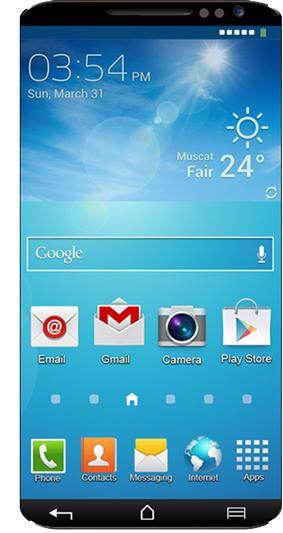

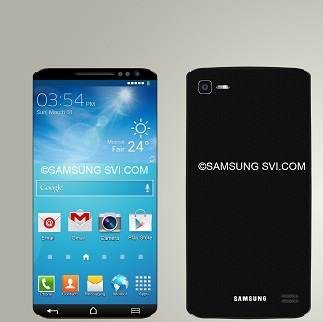
.jpg)

-32-GB.jpg)
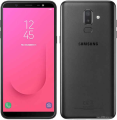
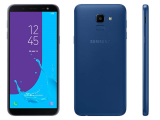
.jpg)
